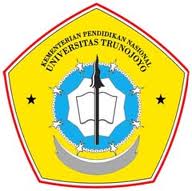Anda belum Log-in!
Silahkan Log in
Selamat Datang di Portal Digital Content Publisher
Kamis , 18 September 2025
Perpustakaan sebagai jantung pendidikan tinggi di Indonesia, harus mampu memberi kontribusi yang berarti bagi pelaksanaan proses belajar mengajar di perguruan tinggi.
di-posting oleh 140511100040 pada 2018-08-15 14:21:08 • 78 klik
CADENCE’S ALIENATION IN E. LOCKHART’S WE WERE LIARS
CADENCE’S ALIENATION IN E. LOCKHART’S WE WERE LIARS
disusun oleh RATNA WULANDARI
| Subyek: | Alienation Erich Fromm We Were Liars |
| Kata Kunci: | Alienation Erich Fromm We Were Liars |
[ Anotasi Abstrak ]
The aim of this study is to discover the phenomenon of alienation and how to avoid it in E. Lockhart’s We Were Liars. Sigmund Freud\'s theory of Psychoanalytic is used to analyze the novel. Alienation by Erich Fromm is used as the main theory to analyze the novel and the other theory are used as supporting theory to discover the phenomenon of alienation. This study applies descriptive research by Isaac and Michael and qualitative research by Fraenkel and Wallen. The source of data is a novel by E. Lockhart entitled We Were Liars which is published in 2014. The data of this research are narrator’s explanation and character’s utterances that answer the research problems which described the phenomenon of alienation and the way to avoid it. The analysis of the novel is collect the data, reduce the data, compilate the data and draw the conclusion. The result of the study show that this novel describes alienation in various forms: aliened human, alienation roots and self-estrangement. The main trigger for alienation is alienation roots. alienation roots is the main trigger because the root of alienation is a family that is influenced by culture and economy. Then, it can be overcome in two ways: the out-way for alienation and freedom.
Deskripsi Lain
The aim of this study is to discover the phenomenon of alienation and how to avoid it in E. Lockhart’s We Were Liars. Sigmund Freud\'s theory of Psychoanalytic is used to analyze the novel. Alienation by Erich Fromm is used as the main theory to analyze the novel and the other theory are used as supporting theory to discover the phenomenon of alienation. This study applies descriptive research by Isaac and Michael and qualitative research by Fraenkel and Wallen. The source of data is a novel by E. Lockhart entitled We Were Liars which is published in 2014. The data of this research are narrator’s explanation and character’s utterances that answer the research problems which described the phenomenon of alienation and the way to avoid it. The analysis of the novel is collect the data, reduce the data, compilate the data and draw the conclusion. The result of the study show that this novel describes alienation in various forms: aliened human, alienation roots and self-estrangement. The main trigger for alienation is alienation roots. alienation roots is the main trigger because the root of alienation is a family that is influenced by culture and economy. Then, it can be overcome in two ways: the out-way for alienation and freedom.
| Kontributor | : Imron Wakhid Harits, S.S., M.Pd., Ph.D |
| Tanggal tercipta | : 2018-08-07 |
| Jenis(Tipe) | : Text |
| Bentuk(Format) | |
| Bahasa | : Inggris |
| Pengenal(Identifier) | : TRUNOJOYO-Tugas Akhir-14209 |
| No Koleksi | : 140511100040 |
Ketentuan (Rights) :
2018
 Download File Penyerta (khusus anggota terdaftar)
Download File Penyerta (khusus anggota terdaftar) 1. TRUNOJOYO-Tugas Akhir-14209-COVER.pdf - 1084 KB
1. TRUNOJOYO-Tugas Akhir-14209-COVER.pdf - 1084 KB 2. TRUNOJOYO-Tugas Akhir-14209-ABSTRACT.pdf - 193 KB
2. TRUNOJOYO-Tugas Akhir-14209-ABSTRACT.pdf - 193 KB 3. TRUNOJOYO-Tugas Akhir-14209-CHAPTER I.pdf - 177 KB
3. TRUNOJOYO-Tugas Akhir-14209-CHAPTER I.pdf - 177 KB 4. TRUNOJOYO-Tugas Akhir-14209-CHAPTER II.pdf - 247 KB
4. TRUNOJOYO-Tugas Akhir-14209-CHAPTER II.pdf - 247 KB 5. TRUNOJOYO-Tugas Akhir-14209-CHAPTER III.pdf - 207 KB
5. TRUNOJOYO-Tugas Akhir-14209-CHAPTER III.pdf - 207 KB 6. TRUNOJOYO-Tugas Akhir-14209-CHAPTER IV.pdf - 267 KB
6. TRUNOJOYO-Tugas Akhir-14209-CHAPTER IV.pdf - 267 KB 7. TRUNOJOYO-Tugas Akhir-14209-CHAPTER V.pdf - 88 KB
7. TRUNOJOYO-Tugas Akhir-14209-CHAPTER V.pdf - 88 KB 8. TRUNOJOYO-Tugas Akhir-14209-CONCLUSION.pdf - 88 KB
8. TRUNOJOYO-Tugas Akhir-14209-CONCLUSION.pdf - 88 KB 9. TRUNOJOYO-Tugas Akhir-14209-REFERENCES.pdf - 142 KB
9. TRUNOJOYO-Tugas Akhir-14209-REFERENCES.pdf - 142 KB 10. TRUNOJOYO-Tugas Akhir-14209-APPENDIX.pdf - 129 KB
10. TRUNOJOYO-Tugas Akhir-14209-APPENDIX.pdf - 129 KB Dokumen sejenis...
Dokumen sejenis...Tidak ada !
 Dokumen yang bertautan...
Dokumen yang bertautan... Kembali ke Daftar
Kembali ke Daftar 